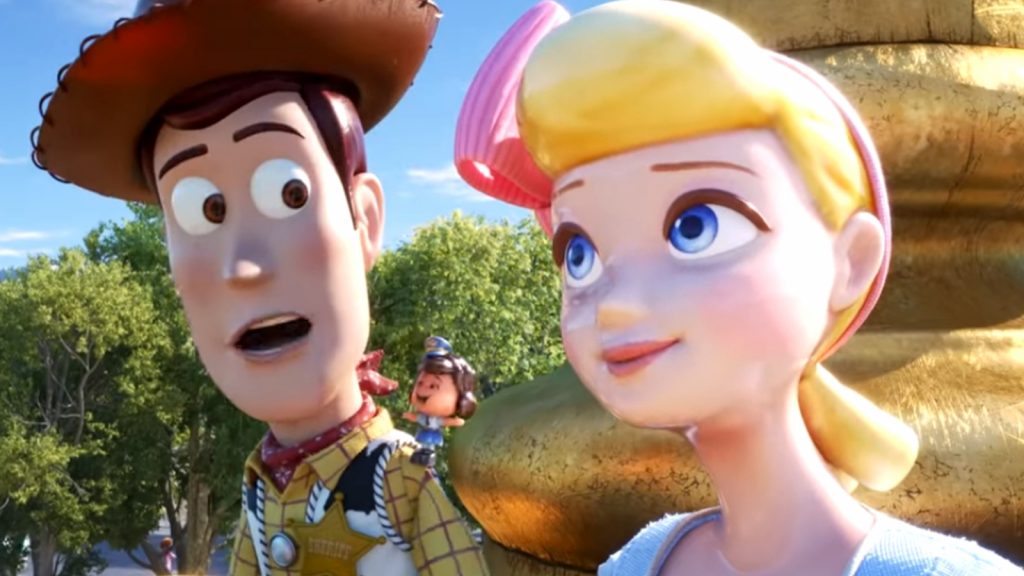Five years ago, launching a decent streaming platform took millions. Now? A teenager with a laptop can build something that reaches millions. That shift…
Toy Story 4 review: an emotive, charming classic

Apprehensive that a fourth movie in a classic Pixar franchise was pushing it, I went into watching Toy Story 4 with a considerably skeptical eye.
I was convinced that I would be bored and have a few laughs while watching an overly predictable plot unfold with the usual lame string of above-the-belt, kid-friendly gags.
There were kids in the cinema, yes, but all us adults were the ones chuckling the entire time.
With a slightly sinister unicorn, a running trash joke, a pair of ludicrous teddy bears and Buzz Lightyear grappling with the concept of an “inner-voice”, the movie was filled with mirth.
Though everything did indeed remain above-the-belt, I can safely say, this 23-year old “adult” was pleasantly surprised.
In terms of plot, re-entering the Toy Story world felt familiar rather than forced, and I found myself easily absorbing Toy Story 4.
To cut a series of overlapping events and story lines short however, and to minimise spoilers, I’m not going to get into the nitty-gritty plot details. Rather, I’m going to focus on the one thing Pixar absolutely nailed in Toy Story 4– character development and the very real emotions that come with big life changes.
Bonnie
The movie takes off where it left off in Toy Story 3: teenage Andy leaving his favourite toys to the little toddler Bonnie.
Bonnie feels lonely and isolated as she’s about to start pre-school. Coming across as a classic introvert, she creates her own friend with some used art supplies and calls him Forky. The spork with pipe-cleaners for hands becomes her best friend.
Pixar puts Bonnie’s introverted nature, anxiety and sadness forward in an incredibly realistic and emotive manner throughout the movie.
Everything from her mannerisms, to her expressions and her body language are a true representation of an introverted child in any new environment. So real, in fact, that it’s almost triggering.
Bonnie’s plight therefore, hit me right in the feels for the most part. Something Pixar has gotten rather good at doing.
Forky
Forky was created by Bonnie from trash stationery items, so he believes that he is trash. While this is hilarious, the spork also faces an existential crisis because of it.
He cannot understand how he has popped into existence with a purpose fully formed, and really just wants to spend his time trash-diving.
With Woody’s help, Forky learns why he is important to Bonnie, and comes to understand that he needs to be there for her.
Pixar effectively explores the concept of purpose, and the idea that some things are more important than one’s self interest. All it really took was Forky learning to see his role in Bonnie’s life, from her perspective.
Forky’s depth is perhaps the most subtle out of all the characters, but it’s present nonetheless.
Woody
Woody is the polar opposite, and is obsessed with having a purpose. He is convinced that there is no greater task in the world than having a kid and being there for them.
Unfortunately, Woody is no longer a favourite toy and is instead lacking purpose in Bonnie’s life. He gives himself purpose by trying his hardest to help Forky become the toy he should be for the little girl.
On one hand, Woody’s wisdom as a seasoned and experienced toy is charming, but on the other his anxiety about becoming obsolete gets more and more pronounced throughout the movie.
The cowboy can’t let go of the idea that he has to be there for a child, and that he is useless without one.
Woody’s crisis is the most pronounced, and adult, concept of the entire movie — learning to let go. With Woody, Pixar flips the Forky coin and addresses the idea that, at some point, we have to focus on ourselves and go after the things that we dream of instead of sticking in a comfort zone.
For Woody, being a child’s toy in the way he was to Andy was all he knew, but it was time for him to experience life beyond that.
There were moments when the cinema was deathly silent as we all absorbed the real-life lessons with Woody.
There are many more characters, both old and new, who also go through life changing experiences while dealing with their inner conundrums, all of which are expertly tackled.
In fact, Toy Story 4 feels like it’s speaking to its original 1995 audience and their parents, rather than the children of today.
Toy Story 4 is the different stages of growing up, all wrapped into one and a half hours.
With laughter, meaningfulness and a few moments worthy of tears, the movie holds true to the classic Pixar brand.
Accomplishing that so far into the franchise while remaining relevant without being overly predictable is pretty damn impressive.
Oh, and the post-credit scenes are a must see if you didn’t laugh enough during the movie.
Feature image: screenshot, Pixar via YouTube


